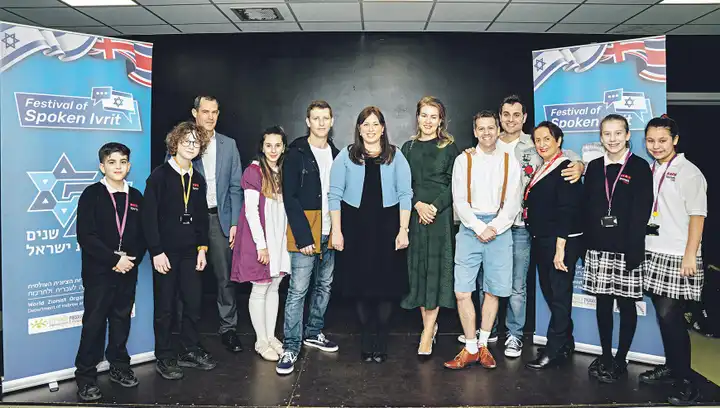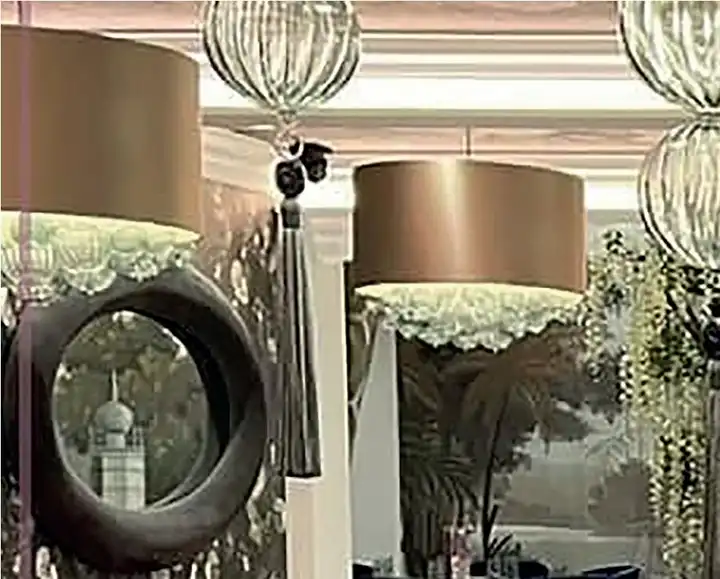
4 minute read
part in fifth WZO Festival of Spoken Ivrit
by Jewish News


























In a documentary airing tonight Stephen Fry visits Amsterdam to uncover the story of two artists’ heroic act of defiance that saved many Jews from the camps.
By Louisa Walters
During the occupation of the Netherlands in the Second World War, Willem Arondeus, a painter, and Frieda Belinfante, a cellist, used their artistic skills to forge identity cards that saved thousands of Jews from the death camps. This was no mean task because the Dutch had the most sophisticated identity card system in the world, and they had watermarks, making them incredibly had to forge. What’s more, the Nazis had a clever backup: each card they issued had a duplicate stored in the Amsterdam Central Records O ce.


Together with a group of fellow artists, Willem led a daring raid to blow up the Central Records O ce and destroy the duplicate cards. There was only one proviso: no one could be harmed in the process because: “We are not like them.”
Stephen Fry went to Amsterdam to find out why this story has remained largely hidden. He had never heard of Arondeus and Belinfante and neither, it seems, had many Dutch people. “Gerrit van der Veen was a fellow artist and resistance member, but he is well known and has streets and schools named after him,” says


Stephen. “We think of the Netherlands as this wonderfully tolerant, accepting country with all kinds of progressive ideas, but you could say that Willem and Frieda weren’t celebrated until recently because they were gay.”
This made the story personal to Stephen and drew him in. “If I weren't gay and I weren’t Jewish, would I have the same deep sense of wanting to oppose injustice, the same sense of being apart from the main run of humanity? It’s impossible to answer, because your whole identity is bound up in so many di erent things, but one’s minority status does open up a questioning and inspection of the world.”
He says the war gave Willem and Frieda the opportunity to fight for their ideals. “It was a mixture of being able to fight for what they believed in, for the freedom of the oppressed and the Jews in particular, but also a way to belong, as they were both gay. Willem had been thrown out by his family when he came out aged 17, and he left his lover because he didn't want to involve him in the danger that he was embarking on, so he got himself a family, and gay people have always looked for a family.”

Frieda had a flourishing career as a conductor but was outraged by injustice and cruelty and had once suggested forging the papers of a lover who was Russian, so she was always a bit transgressive. She’d exhibited courage by living more or less openly as a lesbian with lovers, and was infuriated by the philistine hypocrisy of the Nazis, who were anti-art but loved to go to concerts.
“In classical music, there has always been a large proportion of orchestras that have been Jewish, particularly in the string sections, so


Frieda knew a lot of Jews who were being bleached out of the orchestra. That enraged her,” says Stephen.

“Eventually, she was smart enough to dress as a man and make her way via Switzerland to America. Her contribution to the film is marvellous – for her to leave a recorded testimony is immensely lucky for us and for the world.”
The element of trust was key to the plan. Money was needed for the paper for the forgeries. Henry Heineken was the richest man in the country and on the board of the Dutch orchestra Concertgebouw, for whom Frieda had played. She sounded him out and found she had his absolute support, but he couldn’t get to his money: huge bank withdrawals would have alerted the Nazis, who had control of the Heineken brewery’s profits. Frieda had a brilliant idea: he could buy her cello and pay a huge amount for it – 1,000 euros. The Nazis would be none the wiser. “This makes me feel better about drinking Heineken!” says Stephen.
Among the resistance artists were writers and printers but, he explains, the problem was that Jews had identity cards with a big J on them. “Someone had a friend at the registry who got a few out-of-date copies to them,



Music to our ears

The music for this documentary has been composed by Debbie Wiseman. She has worked with Stephen Fry before, bringing to life Oscar Wilde for the big screen, plus her work can be heard on TV programmes including Andrew Marr’s Sunday morning show, Wolf Hall and Joanna Lumley’s Nile Debbie was one of 11 composers chosen to compose for the Queen’s Diamond Jubilee Pageant in 2012 and they started to learn how to do forgeries. However, when some of the forged passes were discovered, the authorities were alert to it and could call up the registry and ask about the duplicate of the pass. Someone said: well, if there’s no registry, how do they check the papers? Let’s just blow it up with an incendiary bomb. I’m filled with admiration for that extraordinary bravery.”
They were determined that no one should die in the bombing. “This is the di erence between the Nazis and the humanitarian poofter artists: you can laugh at us as much as you like, but we actually care about people and about the world. In the end, the way people are treated is the thing, and the artists understood that instinctively,” says Stephen. The bombing worked better as propaganda than as a genuine hindrance, because there were other registries in other cities and only about 20 percent of the documents were burned in the raid.
Stephen says: “I’d love to meet Willem and Frieda and tell them a bit about the present day, that I’m a man who married another man, and that the Netherlands was the first country to allow that. I’d tell them that their little part in that journey towards a more accepting and better world has now been noted.”
� Stephen Fry – Willem and Frieda: Defying the Nazis airs on 2 March at 9pm on Channel 4 and was commissioned to compose for her 90th birthday celebration in 2016. Awarded an OBE for services to music in 2018, she was voted the most popular living composer in Classic FM’s Hall of Fame 2022. She is now working on compositions for the King’s coronation on 6 May.












